ディグリーネームを活用する(後編)/音楽理論講座
キー変更にディグリーネームを活用する
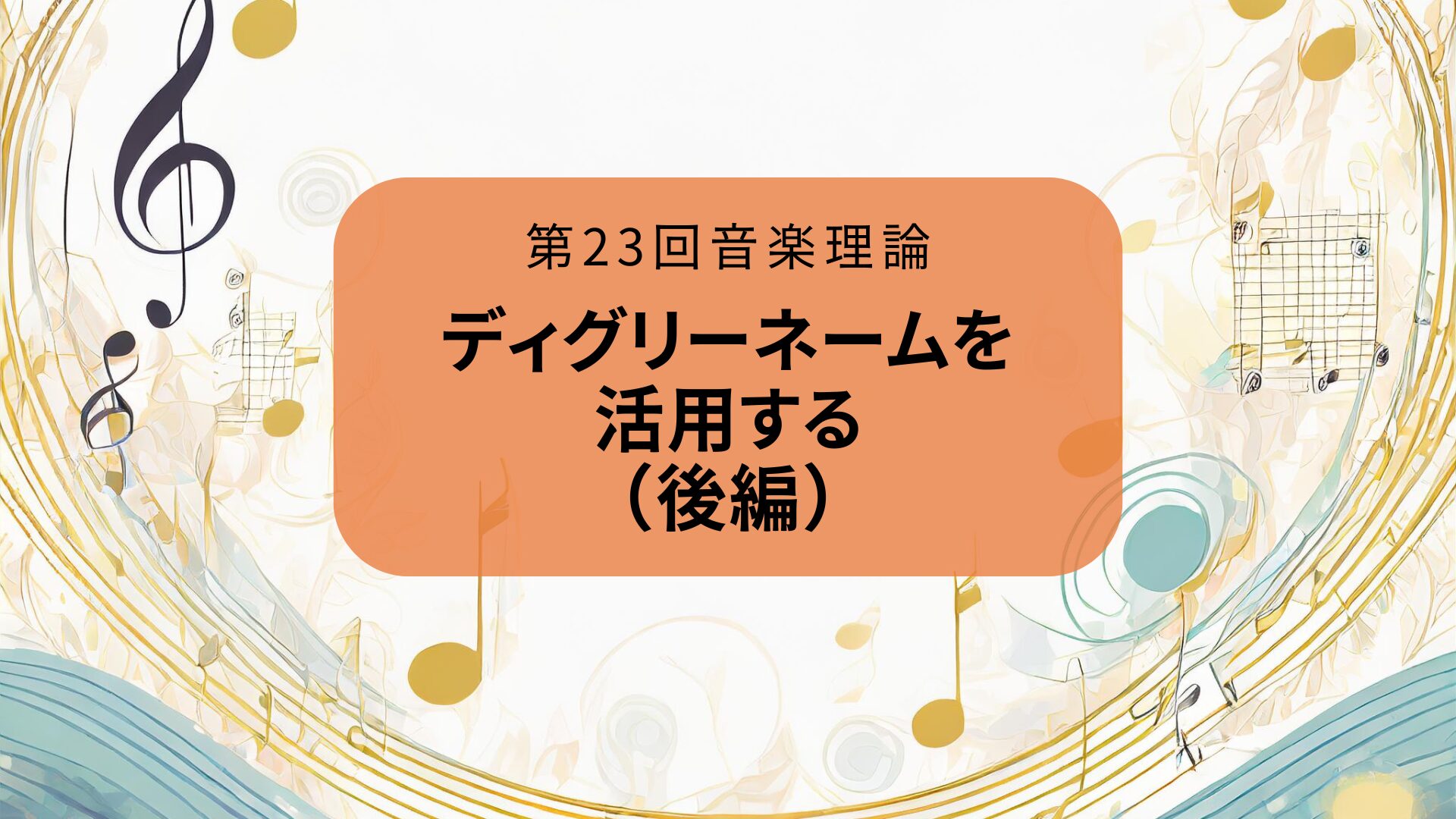
前回に引き続き、ディグリーネームの活用方法を学んでいきます。
まずは、キーの変更についてです。
ディグリーネームを使うと、非常に簡単にキーを変更することができます。
例えば、カノン進行(Key=Dメジャー)を使用し曲を作ったと仮定して、歌い手に「キーを下げてほしい」と言われたとしましょう。
キーの説明の際にも、カラオケの例がありましたね。
もしキーの指定が「-2」だった場合は、キーはCになります。
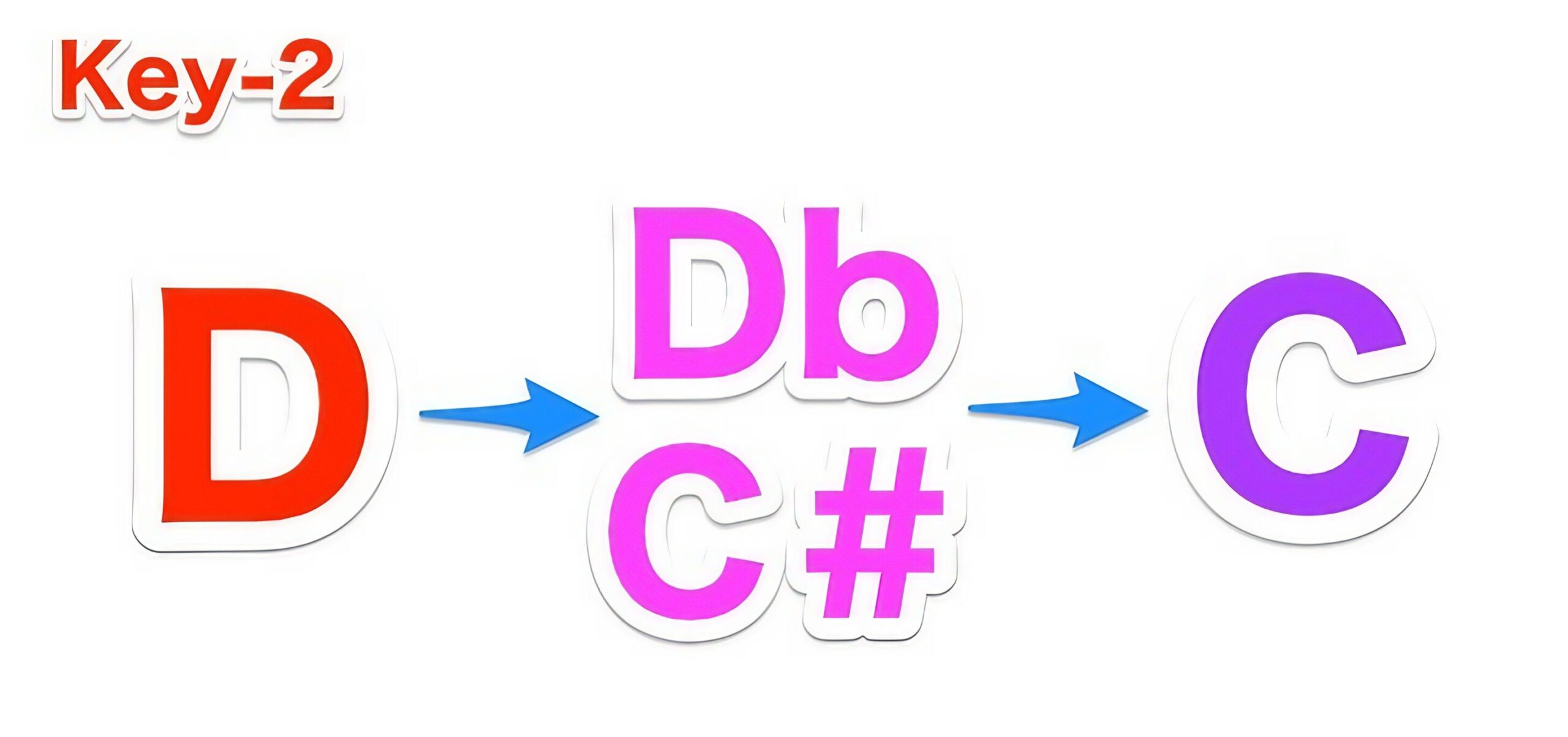
✳︎シンセのピッチなどでもよく見る表記ですが、+1で半音上、-1で半音下となります。
+12で1オクターブ上、-12で1オクターブ下、+7でP5th上です。
今回はキーですので、スケールの最初の音とともに、残りの音も相対的に移動するイメージです。
前回ですでに、ディグリーネームによる解析は済んでいます。

あとはこれに、Cメジャースケールの音を当てはめるだけです。
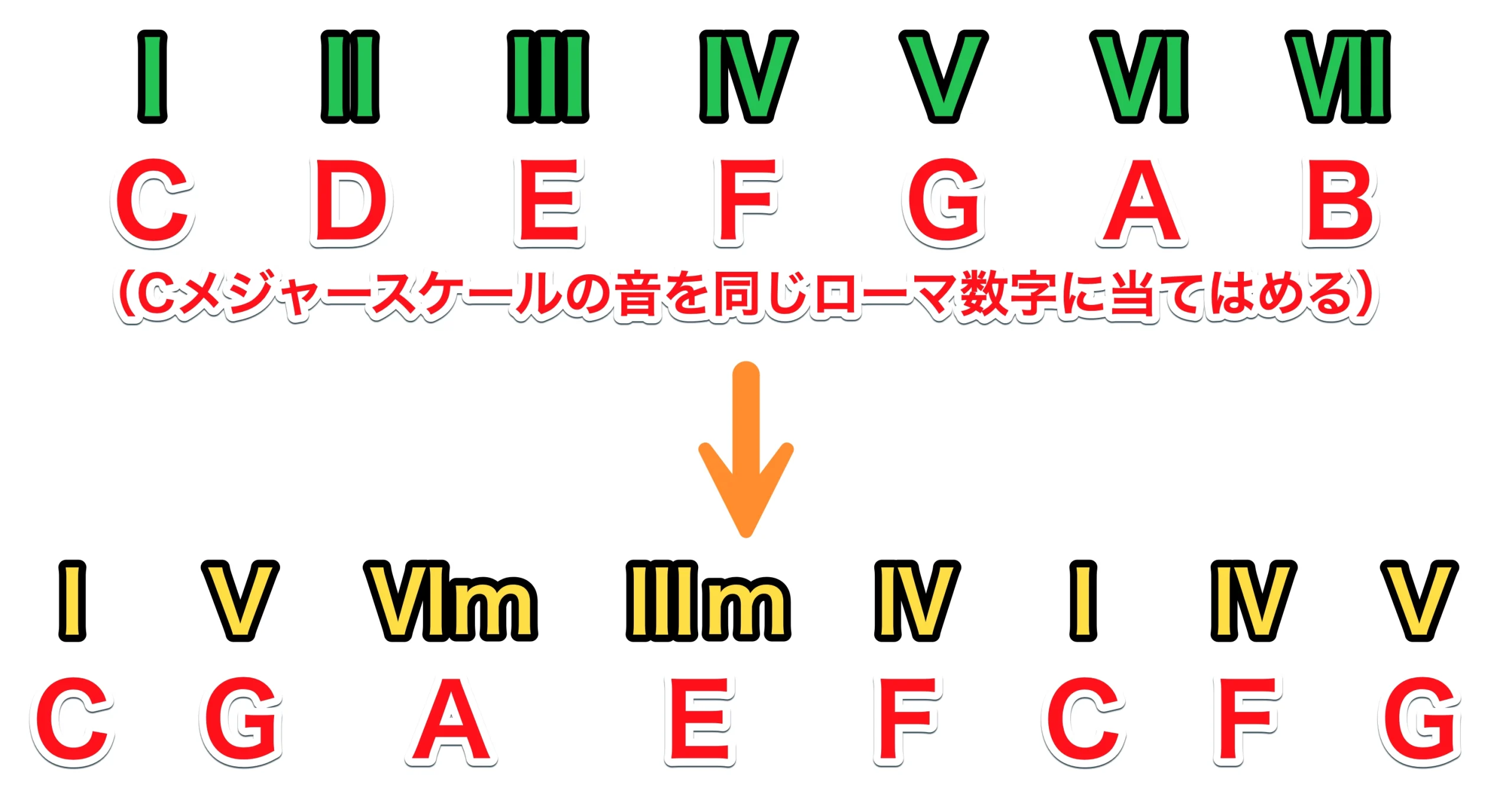
上記を踏まえ、Key=Cでのカノン進行は、以下の音源/譜面/ピアノロールのようになります。

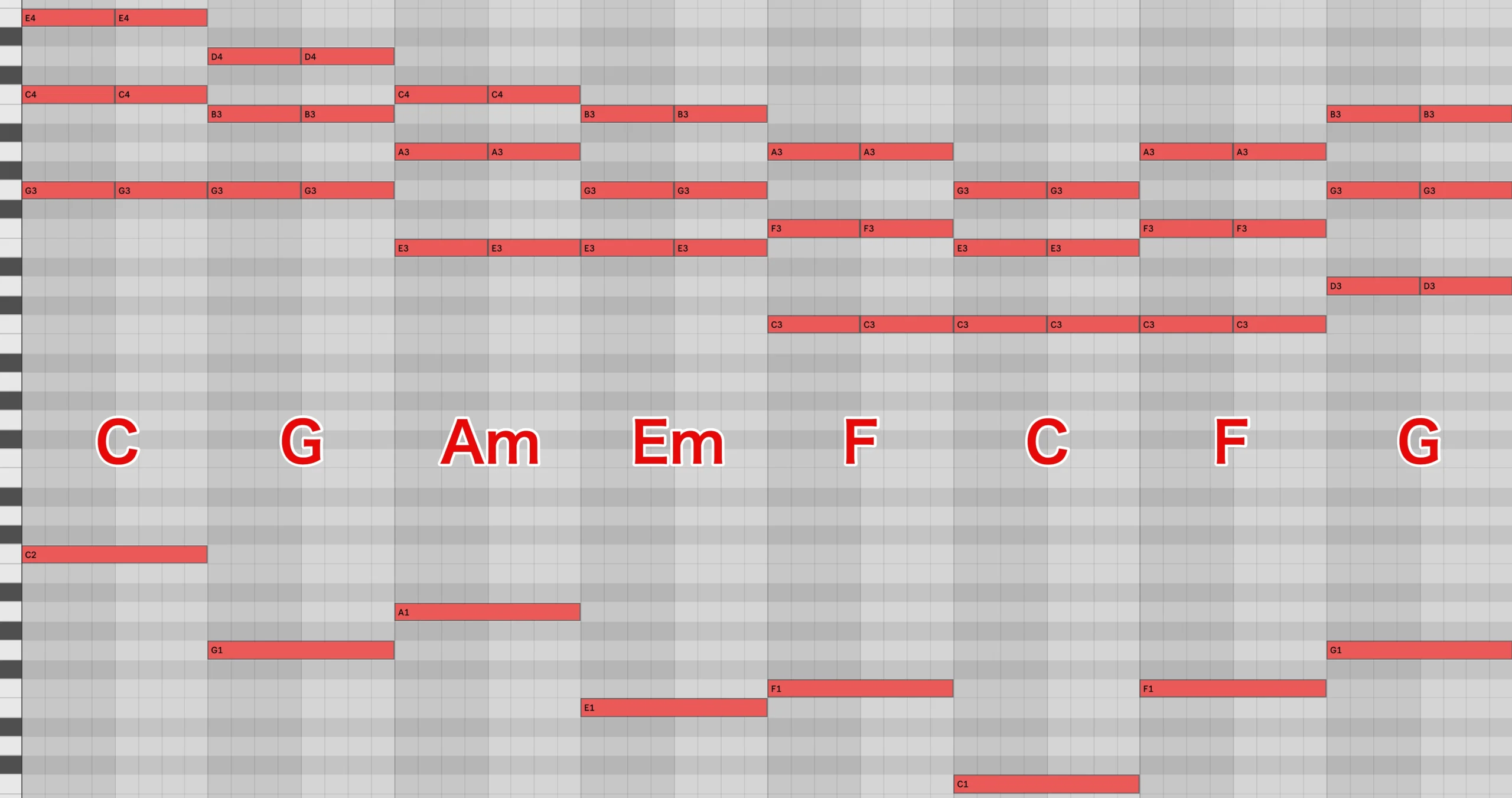
ほとんどのDAWでは、ボタン1つで簡単にキーの変更を行えます。
Cubaseでは、コード表示もある程度キーに追従させることが可能です。
ただ、コード表示の追従が出来ないDAWを使用する場合や、ライブセッションなどの即座にキー変更を求められる状況に置いて、このディグリーネームによるキー変更方法を覚えておくと、非常に役に立ちます。
引き出しとして蓄積している進行を制作に用いる際にも、あらゆるキーで手早く打ち込めるようになるでしょう。
以上のことからも、ぜひ身につけていただきたいテクニックです。
有名なコード進行をディグリーネームで把握する
世の中のヒット曲には共通して使われる進行があり、しかもコード進行自体には著作権がありません。
簡単なダイアトニックコードだけでできる進行もたくさんありますので、今回はその一部をご紹介します。
ぜひ、お気に入りのコード進行を自分のものにしてみましょう。
ダイアトニックコード表とともに、ご確認ください。
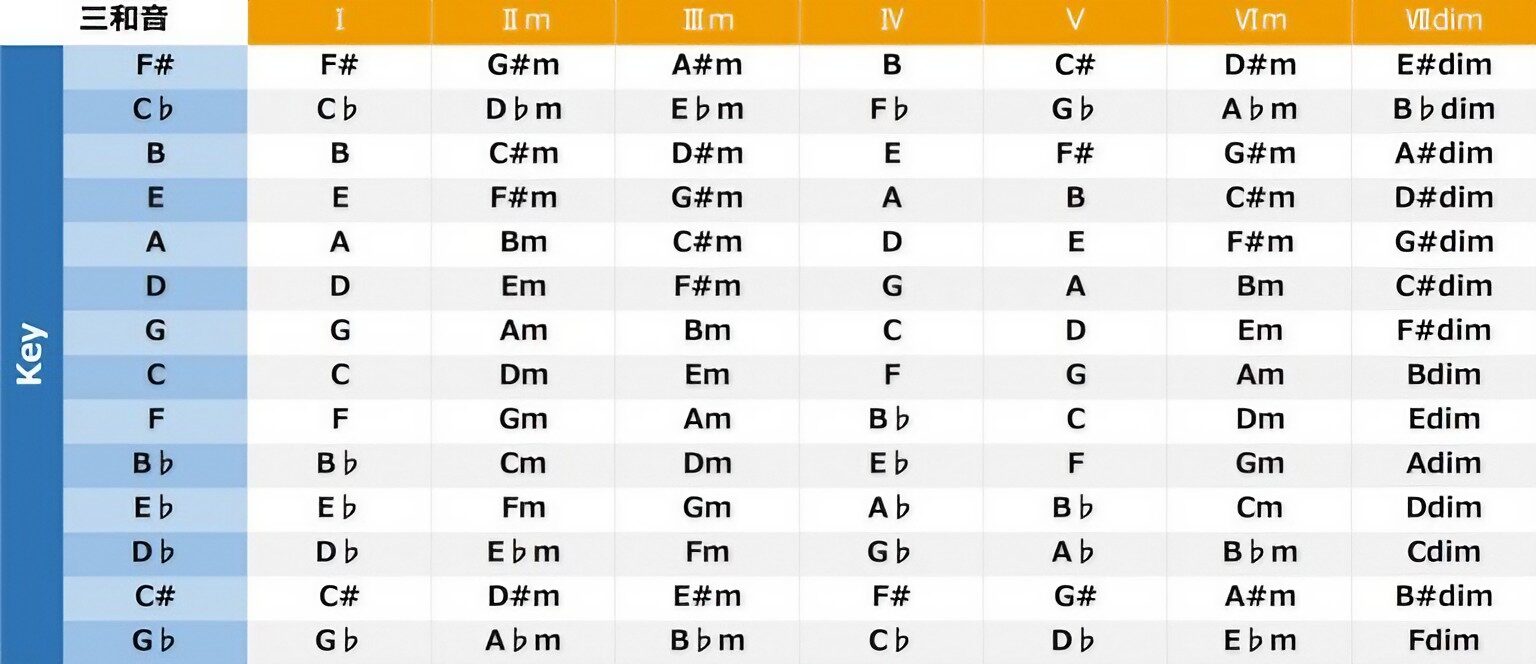
- VIm→IV→V→I
このコード進行は、「小室進行」として知られています。
遅いテンポでは力強い印象を与え、速いテンポでは疾走感を演出する特徴があります。
- VIm→IV→I→V
先ほどの進行から、VとIを入れ替えたものです。
EPIC系の音楽でよく耳にします。
ブロークン・コード(Broken Code) =「分散和音」で演奏すると、イメージしやすいかもしれません。
詳しくは、ボイシング、アルペジオ、ロー・インターバル・リミットをご参照ください。
- IV→V→IIIm→VIm
非常によく耳にするコード進行で、一般的に4和音を含めて「王道進行」と呼ばれる3和音のみのバージョンです。
ジャンルを問わず使用でき、メロディーも乗せやすい進行です。
- IV→V→VIm→VIm
トランスやユーロビートなどのダンス系の4つ打ちでよく使用されるコード進行です。
クールな印象ですね。
- IV→V→VIm→IIIm
途中までは先ほどの進行と同じですが、最後を変えたことにより切ない雰囲気が感じられますね。
このように「最後を変える」ことによって、雰囲気の変化や次への展開が導かれるケースは非常に多いです。
例えば、
- IV→V→VIm→I
こうすると、最後に力強さが出ますね。
その他に、以下の3つも非常によく耳にする進行です。
- VIm→IIm→V→I
- IV→I→V→VIm
- I→VIm→IIm→V
他にも、ここでは紹介しきれないほど多くのパターンがあります。
また、アレンジやテンポ、ボイシングによっても雰囲気が変わってきます。
ぜひディグリーネームを活用し、ご自身の曲で色々な進行を試してみてください。
次回は、4和音のメジャー・ダイアトニックコードでのディグリーネームを取り上げていきます。

















